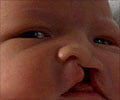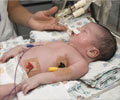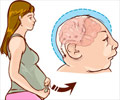An intriguing insight into how the nervous system forms during very early embryonic development is provided by new research
An intriguing insight into how the nervous system forms during very early embryonic development is provided by new research, published by Cell Press in the January 19th issue of the journal Developmental Cell,.
The study sheds light on a process called neural tube closure which, when disrupted, causes congenital birth defects of the brain and spinal cord, including anencephaly and spina bifida.During normal embryonic development, a flat sheet of cells that is destined to give rise to the brain and spinal cord thickens and forms a groove with raised sides. Eventually, the sides of the groove fuse, almost like zipping a zipper, to form a hollow structure called the neural tube. If the neural tube does not "zip up" completely, it causes the brain and spinal cord to develop abnormally, resulting in defects that that range in severity from partial paralysis to death. These neural tube defects are relatively common, representing serious problems for 1/1000 live human births.
Details about what drives formation of the neural tube have remained elusive. But now, a study led by Drs. Eric Camerer and Shaun R. Coughlin from the Cardiovascular Research Institute at the University of California, San Francisco has shown that proteins called protease-activated receptors (PARs), which are best known for their role in tissue response to injury in adults, are required for neural tube closure. The researchers found that mice lacking specific PARs exhibited neural tube defects.
Interestingly, specific PARs and the protein that controls them were only active along the edges of the groove where and when the edges of the neural tube fused. These observations led the researchers to hypothesize that this PAR signaling system might sense the integrity of the tissue, as it does in the case of injuries, to regulate the closure of the tube. "Our discovery of molecular events that contribute to neural tube closure in mice might lead to insights into the complex mechanisms underlying human neural tube defects," concludes Dr. Coughlin.
Source-Eurekalert
RAS














